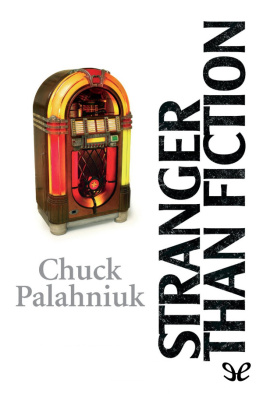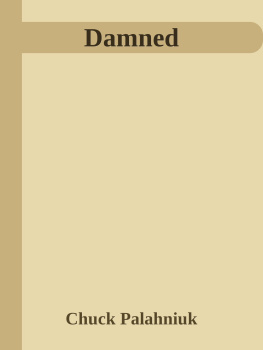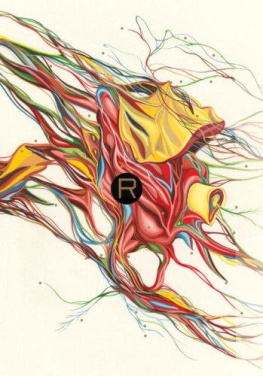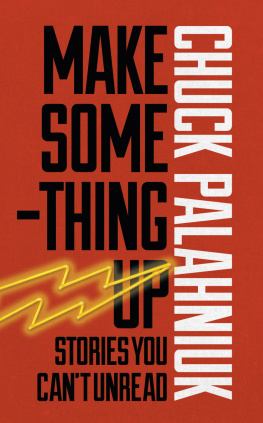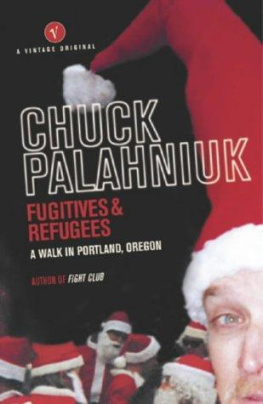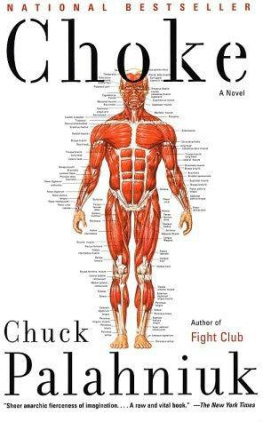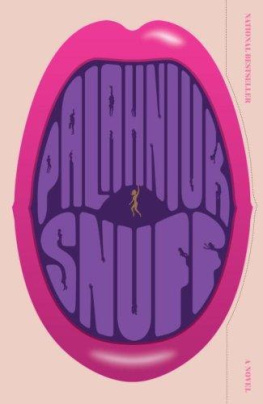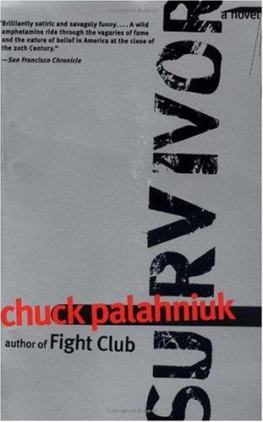Chuck Palahniuks world has always been, well, different from yours and mine. In his first collection of nonfiction, Chuck Palahniuk brings us into this world, and gives us a glimpse of what inspires his fiction. At the Rock Creek Lodge Testicle Festival in Missoula, Montana, average people perform public sex acts on an outdoor stage. In a mansion once occupied by The Rolling Stones, Marilyn Manson reads his own Tarot cards and talks sweetly to his beautiful actress girlfriend. Across the country, men build their own full-size castles and rocketships that will send them into space. Palahniuk himself experiments with steroids, works on an assembly line by day and as a hospice volunteer by night, and experiences the brutal murder of his father by a white supremacist. With this new direction, Chuck Palahniuk has proven he can do anything.

Chuck Palahniuk
Stranger Than Fiction: True Stories
ePub r1.0
Ascheriit 03.11.16
Ttulo original: Stranger Than Fiction: True Stories
Chuck Palahniuk, 2004
Editor digital: Ascheriit
ePub base r1.2

For Mick and Chick
and Chimp
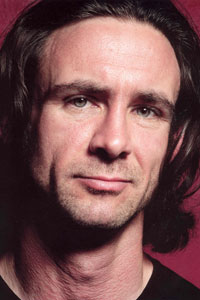
CHUCK PALAHNIUK (Pasco, Washington, February 21, 1962) is an American writer. Palahniuk faced early rejection for his dark and satiric writing, but persevered to write Fight Club, which was published in 1996. The 1999 film version of the novel, which starred Brad Pitt and Edward Norton, shot Palahniuk into the spotlight. He remains a popular author whose other novels include Choke (2001), Lullaby (2002) and Damned (2011).
{Fact and Fiction: An Introduction}
If you havent already noticed, all my books are about a lonely person looking for some way to connect with other people.
In a way, that is the opposite of the American Dream: to get so rich you can rise above the rabble, all those people on the freeway or, worse, the bus. No, the dream is a big house, off alone somewhere. A penthouse, like Howard Hughes. Or a mountaintop castle, like William Randolph Hearst. Some lovely isolated nest where you can invite only the rabble you like. An environment you can control, free from conflict and pain. Where you rule.
Whether its a ranch in Montana or basement apartment with ten thousand DVDs and high-speed Internet access, it never fails. We get there, and were alone. And were lonely.
After were miserable enough like the narrator in his Fight Club condo, or the narrator isolated by her own beautiful face in Invisible Monsters we destroy our lovely nest and force ourselves back into the larger world. In so many ways, thats also how you write a novel. You plan and research. You spend time alone, building this lovely world where you control, control, control everything. You let the telephone ring. The emails pile up. You stay in your story world until you destroy it. Then you come back to be with other people.
If your story world sells well enough, you get to go on book tour. Do interviews. Really be with people. A lot of people. People, until youre sick of people. Until you crave the idea of escaping, getting away to a
To another lovely story world.
And so it goes. Alone. Together. Alone. Together.
Chances are, if youre reading this, you know this cycle. Reading a book is not a group activity. Not like going to a movie or a concert. This is the lonely end of the spectrum.
Every story in this book is about being with other people. Me being with people. Or people being together.
For the castle builders, its about flying a stone flag so grand it attracts people with the same dream.
For the combine-demolition folks, its about finding a way to get together, a social structure with rules and goals and roles for people to fill while they rebuild their community by crashing farm equipment.
For Marilyn Manson, its about a kid from the Midwest who cant swim, suddenly moved to Florida, where social life is lived in the ocean. Here, that kid is still trying to connect with people.
These are all nonfiction stories and essays I wrote between novels. In my own cycle, it goes: Fact.
Fiction. Fact. Fiction.
The one drawback to writing is the being alone. The writing part. The lonely-garret part. In peoples imagination, thats the difference between a writer and a journalist. The journalist, the newspaper reporter, is always rushing, hunting, meeting people, digging up facts. Cooking a story. The journalist writes surrounded by people, and always on deadline. Crowded and hurried. Exciting and fun.
The journalist writes to connect you to the larger world. A conduit.
But a writer writer is different. Anybody who writes fiction is people imagine alone. Maybe because fiction seems to connect you to only the voice of one other person. Maybe because reading is something we do alone. Its a pastime that seems to split us away from others.
The journalist researches a story. The novelist imagines it.
Whats funny is, youd be amazed at the amount of time a novelist has to spend with people in order to create this single lonely voice. This seemingly isolated world.
Its hard to call any of my novels fiction.
Most of the reason I write is because once a week it brought me together with other people. This was in a workshop taught by a published writer Tom Spanbauer around his kitchen table on Thursday nights. At the time, most of my friendships were based on proximity: neighbors or coworkers. Those people you know only because, well, youre stuck sitting next to them every day.
The funniest person I know, Ina Gebert, calls coworkers your air family.
The problem with proximity friends is, they move away. They quit or get fired.
It wasnt until a writing workshop that I discovered the idea of friendships based on a shared passion. Writing. Or theater. Or music. Some shared vision. A mutual quest that would keep you together with other people who valued this vague, intangible skill you valued. These are friendships that outlast jobs and evictions. This steady, regular Thursday-night gabfest was the only incentive to keep me writing during the years when writing didnt pay a dime. Tom and Suzy and Monica and Steven and Bill and Cory and Rick. We fought and praised each other. And it was enough.
My pet theory about Fight Clubs success is that the story presented a structure for people to be together. People want to see new ways for connecting. Look at books like How to Make an American Quilt and The Divine Secrets of the Ya-Ya Sisterhood and The Joy Luck Club. These are all books that present a structure-making a quilt or playing mah-jong that allows people to be together and share their stories. All these books are short stories bound together by a shared activity. Of course, theyre all womens stories. We dont see a lot of new models for male social interaction. Theres sports. Barn raisings. Thats about it.
And now theres fight clubs. For better or worse.
Before I started writing Fight Club, I worked as a volunteer at a charity hospice. My job was to drive people to appointments and support-group meetings. There, theyd sit around with other people in a church basement, comparing symptoms and doing New Age exercises. Those meetings were uncomfortable because no matter how I tried to hide, people always assumed I had the disease they had. There was no discreet way to say I was just observing, a tourist waiting to take my charge back to the hospice. So I started telling myself a story about a guy who haunted terminal illness support groups to feel better about his own pointless life.

